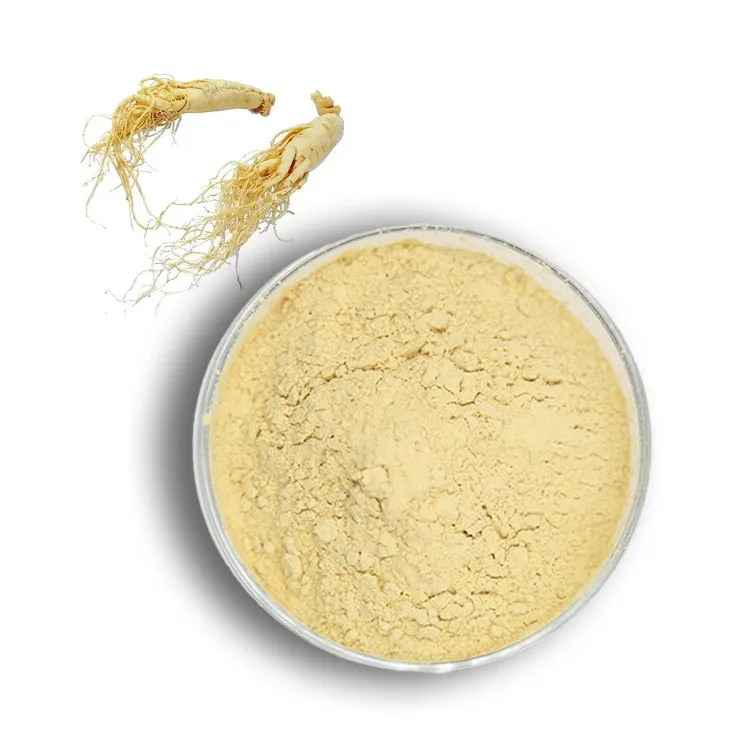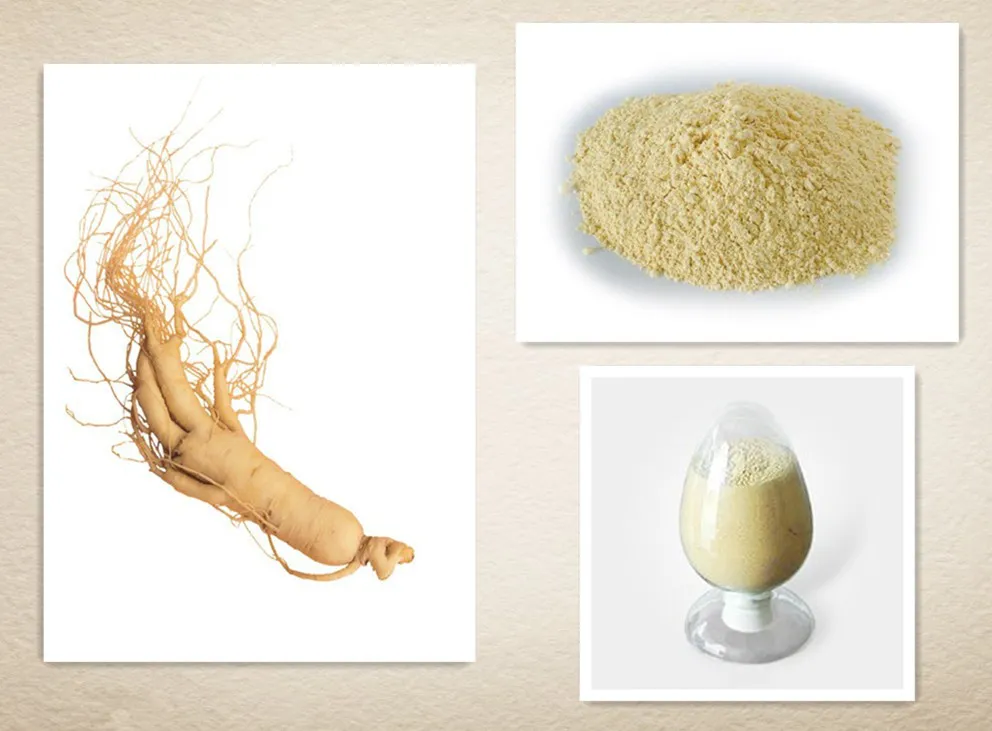- 0086-571-85302990
- sales@greenskybio.com
The Optimal Method for Extracting Ginseng Root Extract.
2024-11-30

Introduction
Ginseng, a well - known and highly valued plant in traditional medicine, has been used for centuries due to its numerous health - promoting properties. Ginseng Root Extract is a concentrated form of the beneficial components present in ginseng roots. Extracting this extract effectively is crucial to obtain its full potential. In this article, we will explore different methods of extracting Ginseng Root Extract, both traditional and modern, and analyze their advantages and disadvantages.

Traditional Extraction Methods
1. Decoction
Decoction is one of the most traditional methods of extracting Ginseng Root Extract.
- The process involves boiling the ginseng roots in water. First, the ginseng roots are washed thoroughly to remove any dirt or impurities. Then, they are cut into small pieces.
- A suitable amount of water is added to the cut ginseng roots. The ratio of ginseng to water can vary, but a common ratio is around 1:10 (1 part ginseng to 10 parts water).
- The mixture is then brought to a boil and simmered for a certain period of time. Usually, it is simmered for about 1 - 3 hours. During this time, the active components in the ginseng roots gradually dissolve into the water.
- After simmering, the liquid is filtered to remove the solid residues of the ginseng roots. The resulting liquid is the ginseng root extract obtained through decoction.
- It is a simple and straightforward method that does not require complex equipment. People can easily perform this method at home using basic kitchen utensils.
- It has been used for a long time in traditional medicine, and there is a wealth of experience regarding its use.
- The long - term boiling and simmering may cause the degradation of some heat - sensitive active components in ginseng. For example, some volatile oils may be lost during the long - cooking process.
- The extraction efficiency may not be as high as some modern methods. Some components may not be fully extracted due to the relatively simple extraction conditions.
2. Maceration
Maceration is another traditional extraction method.
- In this method, the ginseng roots are first crushed or ground into a coarse powder. This increases the surface area of the ginseng, which is beneficial for extraction.
- The powdered ginseng is then placed in a container, and a solvent is added. Commonly used solvents include water, alcohol, or a mixture of both. The container is then sealed.
- The mixture is left to stand at room temperature for a certain period of time, usually several days to a few weeks. During this time, the solvent gradually penetrates the ginseng powder and extracts the active components.
- After the maceration period, the mixture is filtered to separate the liquid extract from the solid residue.
- It is a relatively gentle extraction method compared to decoction. It is less likely to cause significant degradation of heat - sensitive components as it does not involve high - temperature treatment.
- It can be used with different solvents, allowing for the extraction of a wide range of components depending on the solvent chosen.
- It is a time - consuming process. The long maceration period may not be practical for large - scale production.
- There is a risk of microbial growth during the long - standing process, especially if proper precautions are not taken.

Modern Extraction Methods
1. Supercritical Fluid Extraction (SFE)
Supercritical Fluid Extraction (SFE) is a modern and advanced extraction technique.
- In SFE, a supercritical fluid, usually carbon dioxide (CO₂), is used as the extraction solvent. Carbon dioxide is in a supercritical state when it is above its critical temperature and pressure.
- The ginseng roots are first prepared by drying and grinding them into a suitable particle size.
- The supercritical CO₂ is then passed through the ginseng powder in an extraction vessel. The supercritical fluid has unique properties that allow it to dissolve and extract the active components from the ginseng effectively.
- After extraction, the pressure is reduced, and the supercritical CO₂ returns to a gaseous state, leaving behind the extracted components.
- It is a clean and environmentally friendly method as carbon dioxide is non - toxic, non - flammable, and easily recyclable.
- It has high extraction efficiency and can selectively extract specific components depending on the extraction conditions. For example, by adjusting the pressure and temperature, different active components in ginseng can be targeted for extraction.
- Since the extraction process is carried out at relatively low temperatures, it can preserve the heat - sensitive components in ginseng well.
- The equipment for supercritical fluid extraction is complex and expensive. This limits its widespread use, especially in small - scale or home - based extractions.
- The extraction process requires strict control of pressure and temperature, which demands highly trained operators.
2. Ultrasonic - Assisted Extraction (UAE)
Ultrasonic - Assisted Extraction (UAE) is also a modern extraction method.
- In this method, ultrasonic waves are applied to the extraction system. The ginseng roots are usually prepared by grinding them into a powder and then mixing them with a suitable solvent, such as water or alcohol.
- Ultrasonic waves create cavitation bubbles in the solvent. When these bubbles collapse, they generate intense local pressure and temperature changes. These changes help to break the cell walls of the ginseng and release the active components into the solvent more effectively.
- The extraction process is usually carried out for a certain period of time, typically ranging from 15 minutes to a few hours, depending on the specific conditions.
- After extraction, the mixture is filtered to obtain the ginseng root extract.
- It significantly shortens the extraction time compared to traditional methods. The ultrasonic cavitation effect can accelerate the extraction process.
- It can improve the extraction yield and quality of the extract. The effective disruption of cell walls allows for more complete extraction of active components.
- The extraction efficiency may be affected by the characteristics of the ultrasonic equipment, such as the frequency and power of the ultrasonic waves. Different ginseng samples may require different optimal ultrasonic parameters.
- There is a possibility of over - extraction if the ultrasonic treatment time is too long, which may lead to the extraction of unwanted components or the degradation of some active components.

Conclusion
Each of the extraction methods, whether traditional or modern, has its own pros and cons. For small - scale or home - use, traditional methods like decoction and maceration may be more accessible, although they have some limitations in terms of extraction efficiency and component preservation. Modern methods such as supercritical fluid extraction and ultrasonic - assisted extraction offer higher extraction efficiency and better preservation of active components, but they require more expensive equipment and strict operating conditions. When aiming to obtain high - quality ginseng root extract, the choice of extraction method should be based on various factors, including the scale of production, available resources, and the specific requirements for the extract. In the future, further research may lead to the development of more optimized extraction methods that combine the advantages of different techniques.

FAQ:

Question 1: What are the traditional methods for extracting ginseng root extract?
Traditional methods for extracting ginseng root extract often include methods such as decoction. In the decoction method, ginseng roots are boiled in water for a certain period. Another traditional approach could be maceration, where the ginseng root is soaked in a solvent (such as alcohol or water) for an extended time to allow the active components to be released into the solvent.
Question 2: What are the modern extraction methods for ginseng root extract?
Modern extraction methods for ginseng root extract include techniques like supercritical fluid extraction. Supercritical carbon dioxide is often used as a solvent in this method. It has the advantage of being able to operate at relatively low temperatures, which helps preserve the thermally - sensitive components of ginseng. Another modern method is ultrasonic - assisted extraction. Ultrasonic waves are applied during the extraction process, which can enhance mass transfer and increase the extraction efficiency.
Question 3: What are the advantages of traditional extraction methods?
The advantages of traditional extraction methods are that they are often simple and do not require complex equipment. For example, the decoction method can be easily carried out with basic kitchen utensils. Also, traditional methods like maceration are relatively low - cost as they do not need expensive machinery. Moreover, these traditional methods have been used for a long time and are well - understood in terms of their general operation and outcome.
Question 4: What are the disadvantages of traditional extraction methods?
The disadvantages of traditional extraction methods are mainly related to efficiency and product quality. For example, the decoction method may cause the degradation of some heat - sensitive components due to the relatively high - temperature boiling. Maceration is a time - consuming process, which may lead to a long production cycle. Also, traditional methods may not be able to extract all the valuable components from the ginseng root as effectively as modern methods.
Question 5: What are the advantages of modern extraction methods?
Modern extraction methods have several advantages. For example, supercritical fluid extraction can achieve high extraction efficiency while maintaining the quality of the extract. It can selectively extract the desired components and leave behind unwanted substances. Ultrasonic - assisted extraction can significantly reduce the extraction time compared to traditional methods. Also, modern methods are often more reproducible, which means that the quality of the ginseng root extract can be more consistent.
Question 6: What are the disadvantages of modern extraction methods?
The disadvantages of modern extraction methods include the high cost of equipment. For example, supercritical fluid extraction equipment is expensive to purchase and maintain. Also, some modern methods may require highly trained operators due to their complexity. In addition, the scale - up of modern extraction methods from the laboratory to industrial production may face some challenges, such as ensuring the same performance on a larger scale.
Related literature
- Optimization of Ginseng Root Extract Extraction Using Advanced Techniques"
- "Traditional vs Modern: A Comparative Study on Ginseng Root Extract Extraction"
- "The Science Behind Ginseng Root Extract Extraction: A Review"
- ▶ Hesperidin
- ▶ citrus bioflavonoids
- ▶ plant extract
- ▶ lycopene
- ▶ Diosmin
- ▶ Grape seed extract
- ▶ Sea buckthorn Juice Powder
- ▶ Beetroot powder
- ▶ Hops Extract
- ▶ Artichoke Extract
- ▶ Reishi mushroom extract
- ▶ Astaxanthin
- ▶ Green Tea Extract
- ▶ Curcumin Extract
- ▶ Horse Chestnut Extract
- ▶ Other Problems
- ▶ Boswellia Serrata Extract
- ▶ Resveratrol Extract
- ▶ Marigold Extract
- ▶ Grape Leaf Extract
- ▶ blog3
- ▶ blog4
-
Organic non - transgenic black rice extract.
2024-11-30
-
High - quality Chasteberry Extract Products.
2024-11-30
-
China's banana juice powder suppliers.
2024-11-30
-
Bulk purchase of cranberry extract.
2024-11-30
-
How to make powder with bayberry extract?
2024-11-30
-
Elderberry Extract
2024-11-30
-
Tinospora cordifolia extract
2024-11-30
-
Fig Extract
2024-11-30
-
Black Pepper Extract
2024-11-30
-
Pomegranate Extract
2024-11-30
-
Artichoke Leaf Extract
2024-11-30
-
Acerola Extract
2024-11-30
-
Europen Bilberry Extract
2024-11-30
-
Hericium erinaceus extract powder
2024-11-30
-
Astaxanthin
2024-11-30





















